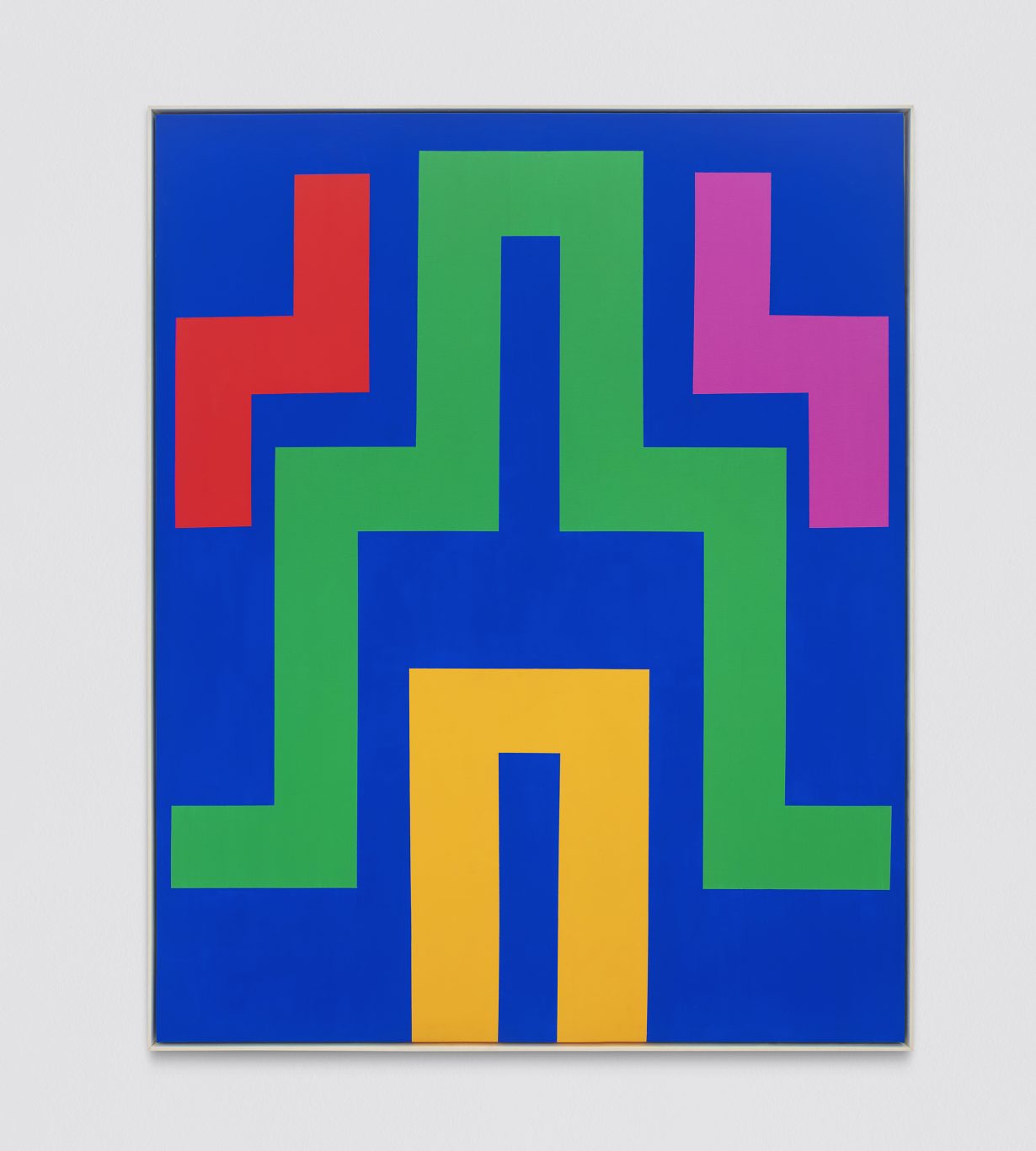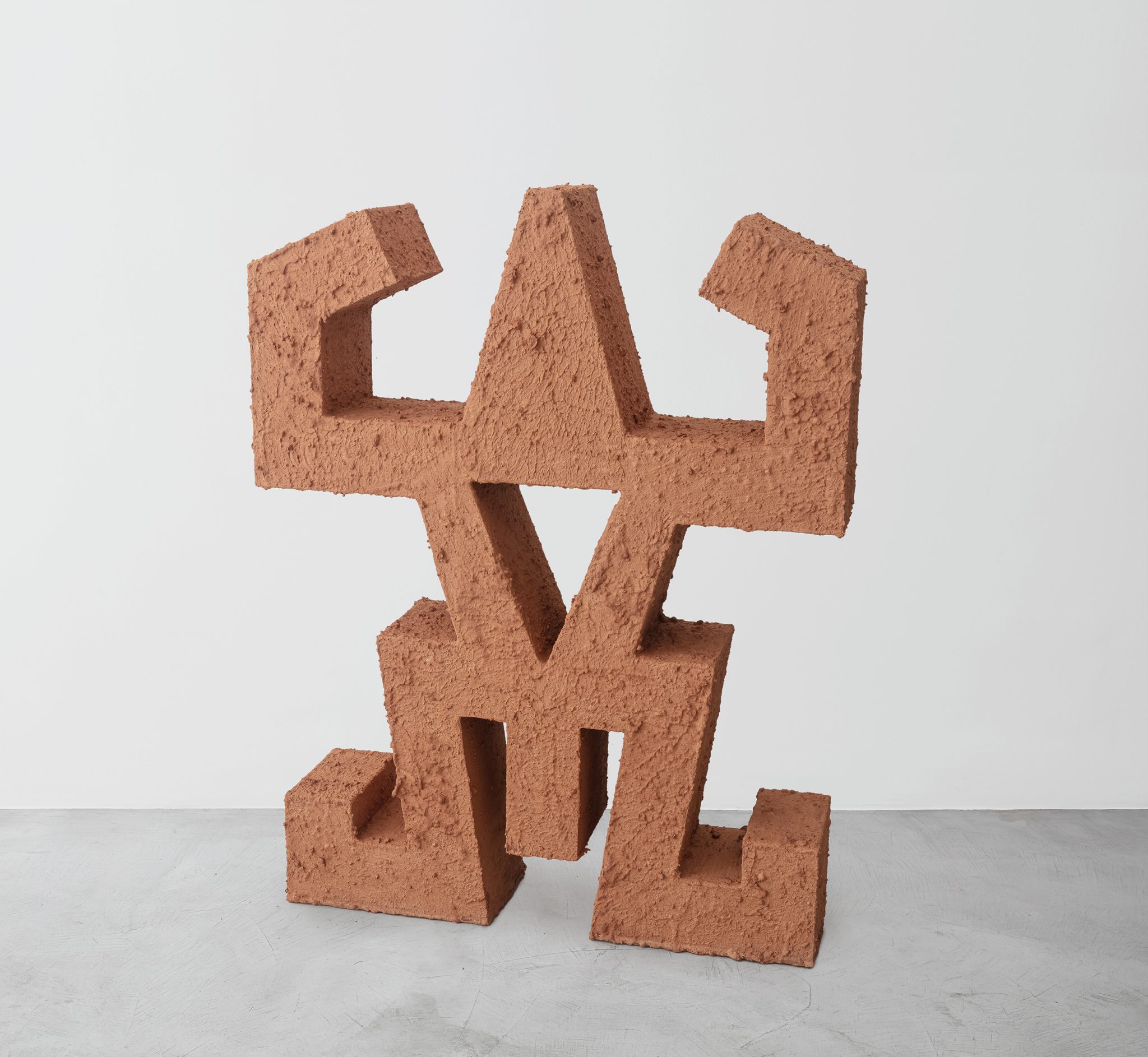Merel’s exhibition suggests that art has always provided a way of working out who we are
It might seem like a recent trend: that the objects filling up contemporary art galleries and museums are being treated by curators as though their purpose is merely to signpost the identity of their makers (see the main show of the recent Venice Biennale, which also featured Cisco Merel in the Panamanian Pavilion). Yet this beguiling show of sculptures by Merel suggests that art has always been a way of working out who we are.
In the gallery, comprising two corridorlike spaces separated by a small internal garden, the Panamanian artist has installed half a dozen large clay sculptures on the wall. Two freestanding versions have been placed on the floor near the entrance. Each wall work takes the form of a heavily abstracted silhouette. Ramaje (Branches, all works 2024), almost two metres high and a metre wide, has the appearance of a compound leaf; four pairs of leaflets, each with a hole, branch off a central stem. On a similar scale, Floramiga also boasts a botanical quality, while Amuleto (Amulet) is semicircular in form, like a fan; and Sol y luna (Sun and Moon) might be presumed – though it’s the most stylised of forms in the show – to depict an eclipse. The floor works are a pair of angular, blocky, flexing figures, both titled La Danza (The Dance), likewise reduced to a hieroglyphic shape. The ceramics have no visible glazing, the material a deep ochre, and the surface of each sculpture is rough, cracked and lumpy – it is as if Merel has cut each directly from a particularly parched stretch of earth or that these sculptures are ancient treasures dug from the dirt and yet to be cleaned. And there is an archaeology to them, although one devoid of actual excavation: Merel draws on the forms and motifs found in molas, the traditional textile consisting of collaged scraps of fabric made by the Guna people of Panama, resulting in works that reflect on Merel’s ethnicity (the artist having Indigenous, Black and Chinese ancestry). The use of clay is an undoubtedly political gesture: Merel symbolically reclaiming the land that once belonged to the first people of Central America (before the waves of immigration, forced and otherwise).

Completing this compact display are two abstract geometric paintings of incredible vibrancy, the colour of the flatly applied acrylic paint popping out against the reddish brown hues of the sculptural work. In Espiritus Fluviales (River Spirits), elongated blocks, of green, purple, blue and more, snake round each other to create a pattern akin to an impossible architectural floorplan, while Eterno Presente (Eternal Present) uses a similar system, with Tetris-like blocks of yellow, green, red and pink symmetrically piling on top of each against a blue background. The forms are reminiscent of those that appear in the La Danza sculptures but also owe something to hard-edged abstraction (Merel worked in the studio of Venezuelan Op Art pioneer Carlos Cruz-Diez).
The title of this last painting gives a clue to Merel’s interest in the fiction of history, in which periods and cultures are delineated and ghettoised. Instead, here, in this work, is identity as it really exists: an eternal, evolving present and multifaceted experience in which the so-called traditional and local, combined with the modernist and internationalist, are rendered indistinguishable. Merel’s symbology, ancient and modern, reflects how life and identity are far more muddled and complex than the contemporary curatorial orthodoxy credits.
Âncoras atemporais at Zielinsky, São Paulo, 3 August – 5 October
